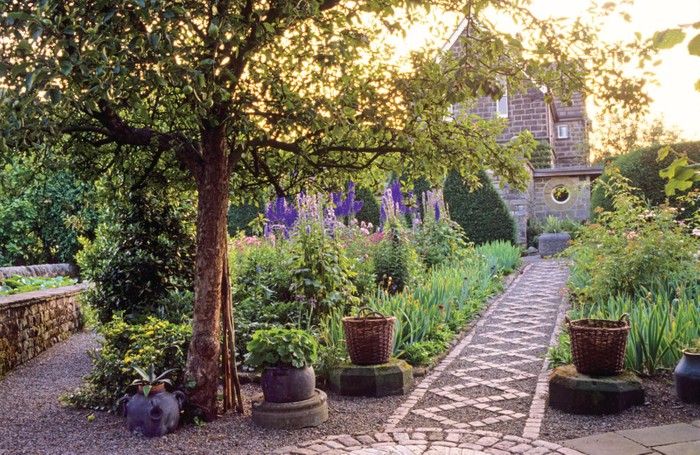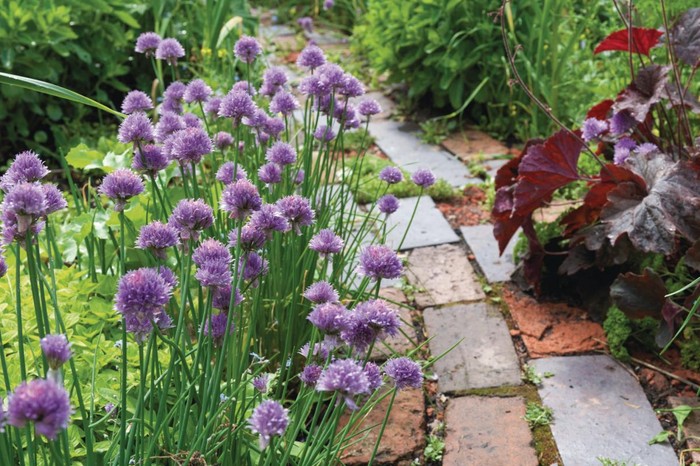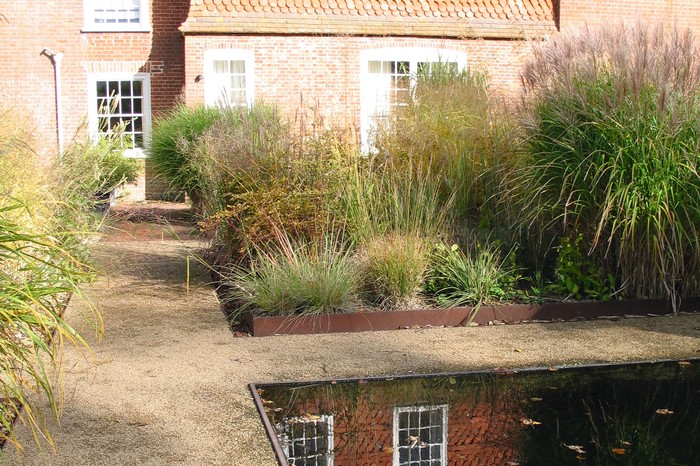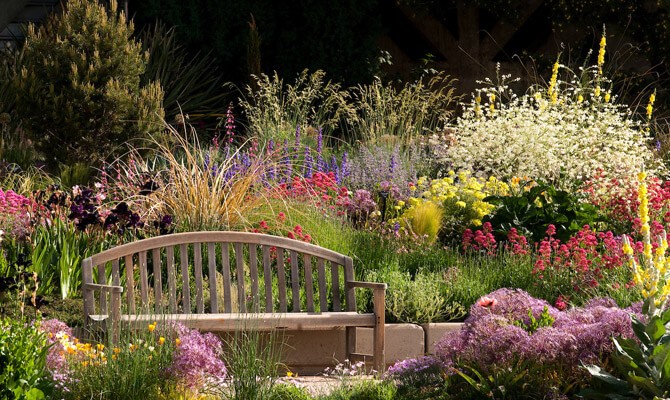
Garden path ideas: how to design a garden path
There are lots of different types of garden paths. Here you'll find ideas, design inspiration and expert advice on what to consider when choosing materials for a pathway in your garden
Unless you garden on a very small – very crowded – balcony, you will undoubtedly find yourself in possession of a garden path. From ambling routes mown into grass to ramrod-straight thoroughfares, paths can be either practical or divertingly scenic - or sometimes both. We all have them: they lead us to and from doors, washing lines and compost heaps. They give us hard surfaces in wet weather and grassy paths along which we can wander barefoot on hot June afternoons. Without them, we would be crashing through shrubberies and tripping over things.

Garden path ideas
In essence, garden paths fall into two categories: the practical and the diverting. The practical paths are the ones that take you where you want to go in the shortest time possible. For example, when you return home tired and laden down with children/shopping/the cares of the world, you really need the shortest distance between you and a gin and tonic: this is not the time for the scenic route. Equally, when it starts raining and you have washing outside, speed is essential, and a diversion via the shrubbery would quickly become annoying.
From ambling routes mown into grass to ramrod-straight thoroughfares, paths can be either practical or divertingly scenic - or sometimes both.
So before laying down a path in your garden, take a step back and consider why you're putting the path there in the first place. Then, look a little outside the box and allow yourself to widen the possibility what roles that path could take, and how it could work in harmony with the rest of your design. Below are some examples of different types of garden path.
Types of garden pathways
Paths for a purpose

You often see lines through borders at shopping centres or across lawns where the soil is compacted or the grass worn away. These are desire lines – the way that people want to walk to get to their destination rather than using the pretty pathways that have been designed for the purpose. Never fight against desire lines, or you will lose. Maybe you have a deep border with a hedge at the back – you need a path in order to access the hedge for cutting without trampling all over your precious plants. All this may seem a bit dull, but it is really important – without such byways your garden will not work properly.
The diverting path

Conversely, the diverting paths are much more exciting. These are ones along which you wander hand in hand with your beloved, paths that entice you towards a shaded bench or summerhouse. These paths can also be used as a visual ‘come hither’ – a straight path that leads you directly to a focal point, be it a sculpture, a building, a view or a tree. This is usually quite a formal and straightforward arrangement – what you see is what you get. However, a curved path is much more seductive, especially one that disappears around a corner to arrive at… a shaded bench? A tree? A view? Who knows what? Remember, however, that it needs to lead somewhere good if disappointment is to be avoided.
The troublesome path
I have a troublesome path in my own garden: it guides you through emerging perennials, established trees and past a pond. So far, so delightful. But the problems arise when it gives you no choice but to wander into the composting and general storage-of-junk department at the end of the garden. We need a path to this area, but it cannot be part of the main pathway network as not every visitor will find my rubbish that captivating.
The selfish path
If I may digress for just a moment, while it is important to think of visitors to your garden, it is far more important to think of yourself, as you will walk these paths much more often than your mother or the vicar. They need to make you happy every time you wander off for a quick pootle round the garden.
Garden path materials

There are so many options: paving, gravel, bark, bricks, grass, timber, chamomile – pretty much anything. I made a wonderful path out of steel washers a few years ago: it clinked when you walked on it, as if you were wearing spurs.
The important thing is that you keep it simple and do not mix up your materials too much. If it is a path that will be used all year round, it needs to have a hard surface that drains efficiently – you don’t want to get muddy shoes ’twixt front door and car. More than anything, I tend to use gravel (especially in country gardens), as it goes well with most paving stones and is cheap and easy to lay. Make sure you have a good solid edge (steel is simple and unobtrusive) and a decent sub-base.
Further reading
- Hardscape: Innovative Hard Landscaping Materials for Gardens by Ann-Marie Powell (David & Charles, 2001).
- Driveways, Paths and Patios: A Complete Guide to Design Management and Construction by Tony McCormack (Crowood Press. 2005).
- Alan Titchmarsh How to Garden: Lawns Paths and Patios by Alan Titchmarsh (BBC Books, 2009)
Authors


Niwaki bundle worth £57 when you subscribe
Subscribe to Gardens Illustrated magazine and claim your Niwaki bundle worth £57
*UK only

Container Gardening Special Edition
The Gardens Illustrated Guide to Container Gardening.
In this special edition, discover colourful flower combinations and seasonal planting schemes for pots designed by leading plantspeople, and essential know-how for container gardening success. Just £9.99 inc UK p&pBy entering your details, you are agreeing to our terms and conditions and privacy policy. You can unsubscribe at any time.

Gardens of the Globe
From botanical wonders in Australia to tranquil havens closer to home in Ireland, let this guide help you to discover some of the most glorious gardens around the world
By entering your details, you are agreeing to our terms and conditions and privacy policy. You can unsubscribe at any time.




